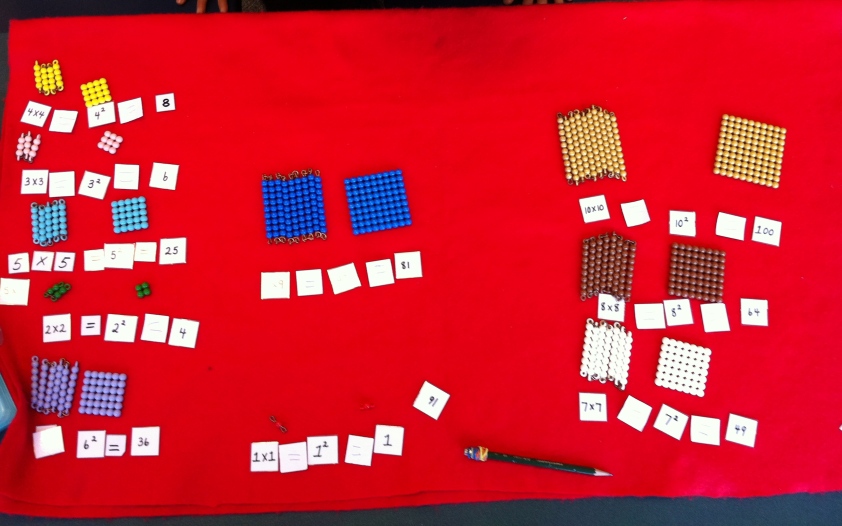For the past week, I’ve been on loan to part of our upper elementary class while the remainder of the class is on a trip. Even though I brought some of our oldest lower elementary children (the ones who will be moving into the older class next year), I’ve only had between 8 and 10 children each day, and that has given me a chance to notice some quirks of my own behaviour.
What I want to see more than anything in my classroom is focused, joyful work. Within limits, I don’t care all that much what the children choose to work on; I just care that the work on it with attention, effort, and enthusiasm. And yet, I find it nearly impossible not to meddle, and the longer the children focus on a particular project, the more I feel the urge to interrupt them, sometimes to try to guide them to something else and sometimes in a weirdly backwards effort to inspire them to keep working on the project longer.
I’ve suspected all year that I might be interfering at less than helpful moments, but in a full classroom with lots of children who really do need redirection fairly often, it’s easy not to notice. On the other hand, with only eight children, most of whom (being older) have fairly involved projects to work on, there really isn’t that much for me to do a lot of the time. Yes, there are lessons to give, but if I gave lessons with the sort of frequency that I’d give them in a class of 30, they’d do nothing but sit in lessons all day and get very, very annoyed with me.
So what the heck’s going on? Here’s a few things I’ve thought of.
- It’s really, really hard to accept that sometimes my job means sitting back and not “teaching”. As soon as I realize the best thing to do is get out of the way and prepare materials, observe, update records, or even read a book, the next thought to cross my mind is “but what if someone sees me? They’ll think I’m not doing my job!”
- It’s very hard to ignore the (perceived) societal/parental/administrative pressure to push the children to focus on certain things. I find myself thinking: “okay, you’ve been working on those origami polyhedra all day. It’s time to stop unless you’re going to write a report on platonic solids too. Besides, you haven’t done any writing, or reading, or math, at all today.” So what? They’re concentrating. Hard. And they’re developing spacial skills. And fine motor control. And curiosity about polyhedra, which just might evolve into that report on platonic solids, at least if it’s not too obvious that that’s what their guide is secretly hoping will happen. And anyway it’s a chance to sit down with some children that I rarely have a chance to talk with at any length and hear what they have to say. Verbal expression is a local curriculum requirement, too (not that it’s one that Montessori children have any trouble with!).
- Despite much of a lifetime spent in Montessori (and other progressive) schools, I’m still influenced by the disturbingly common belief that children who are enjoying themselves must not be learning, or working hard. Yes, the enjoyment gets out of hand and spills over into just plain distracted silliness now and then (and is that really the end of the world?), but most of the time, the giggling means the creative juices are flowing. I want that to happen. And yet I interrupt it.
- (This is the not-beating-myself-up reason.) There are legitimate reasons to interrupt the children. They do need to be offered new lessons (even if not too many), and sometimes they do get lost in their projects and need help to refocus. And yes, society has given us (the children and me together) an obligation to make sure they learn certain things. As a first year teacher, I’m not always sure what’s what. Is now a good time to give this lesson? Should I insist they come? Is that giggling a sign of distraction or of focused work? Should I let the distraction go and see what happens, or should I head it off now before it gets really out of hand? Is the work they’re choosing right now a way of avoiding other things? Does it matter? Do we need to have a conversation about responsible choices? I don’t think there are any universal answers to these questions, though I continue to hope that someday I’ll develop an instinct for when to intervene and when to leave well enough alone. In the meantime, all I can do is fumble around trying things and seeing what happens.
